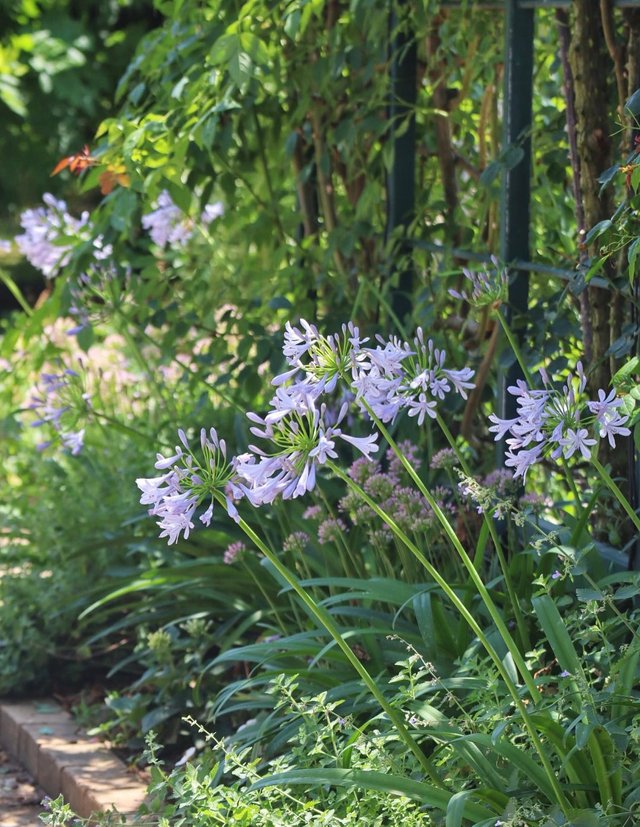Lily of the Nile
The Lily of the Nile is one of the most striking and elegant flowers found in gardens around the world. Despite its name, this plant is not a true lily, nor does it originate from the Nile region—it actually hails from South Africa, where it grows naturally along rocky slopes and grasslands. Over the years, its sculptural form, vivid colors, and hardiness have made it a beloved ornamental plant in both formal and casual gardens alike.Agapanthus consists of around 6 to 10 species and many hybrids. The name Agapanthus is derived from the Greek words agape and anthos (flower), so it's often referred to as the flower of love.
The Lily of the Nile is easily recognizable due to its globular clusters of trumpet-shaped flowers, which appear on tall, leafless stalks that rise above a clump of strap-like leaves. Each umbel may contain 20–100+ flowers, creating a bold and architectural display.Shades range from deep violet blue, lavender, and sky blue to pure white.Typically mid to late summer, though some varieties bloom earlier or later.Depending on the variety, it can grow anywhere from 1 to 5 feet tall.
Agapanthus thrives in full sun but can tolerate partial shade. In cooler climates, it should be placed in the sunniest spot available. The plant prefers well-drained soil and is moderately drought-tolerant once established. However, regular watering encourages more blooms, especially in the flowering season.Lily of the Nile makes a stunning addition to borders, rock gardens, patios, and poolside landscapes. Its architectural form makes it excellent as a focal point or even as a mass planting. When in bloom, it adds vertical drama and a sense of movement with its gently swaying stems.It’s also a low-maintenance plant—deer resistant, relatively pest-free, and tolerant of neglect once established. Many gardeners use it to create Mediterranean-style gardens, mixing it with lavender, rosemary, and ornamental grasses.




